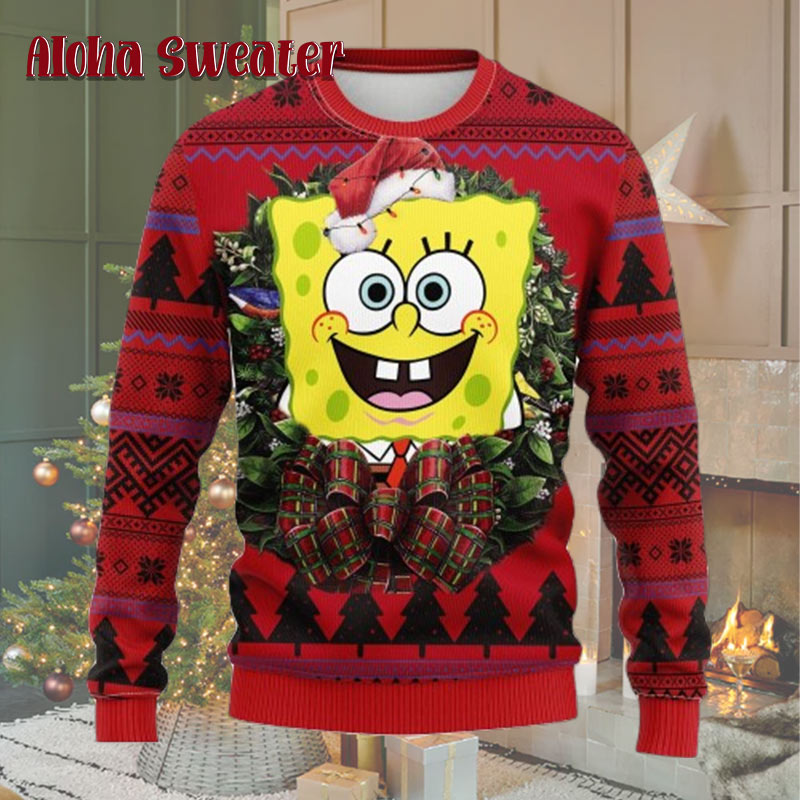Blog
Ugly Christmas Sweater: From Fashion Joke to Global Trend
Once considered a mistake in taste, the ugly Christmas sweater has become a global holiday staple. Found in every corner of the world—from office parties in Tokyo to ski resorts in Switzerland—it now plays a familiar role in seasonal wardrobes. What started as a quiet laugh in a living room has grown into a billion-dollar industry.

This article looks at how the ugly Christmas sweater made that leap. It traces the timeline, the shifts in public opinion, and the larger social patterns that helped a fashion joke turn into a worldwide trend.
1. The Joke: Irony in the Closet
The original ugly Christmas sweater wasn’t created to be funny. Mid-century versions were sincere. They featured reindeer, snowflakes, and trees in soft knits. These sweaters were festive, not ironic.
The joke came later. By the late 1980s and early 1990s, these designs began to feel out of place. Fashion had moved toward minimalism and sleek lines. Anything bright or cheerful became suspect. The holiday sweater, with its busy patterns and childish images, was a perfect target.
People began to wear them as a joke—often digging them out of thrift stores or old closets. At first, it was a private joke. You wore one to a family dinner and got a laugh. But soon, the joke gained shape. Parties were built around the theme. Competitions formed: who could wear the “worst” one?
The irony was the point. The uglier, the better.
2. The Shift: From Mockery to Participation
At some point, people stopped laughing at the sweaters and began laughing with them. The joke became a shared tradition.
The first public signs of this shift came in the early 2000s. Ugly sweater parties moved from basements to bars. Media outlets covered them. Photos appeared online. What was once a private in-joke became a public event.
The appeal was simple: low stakes, high fun. No one had to dress up. No one had to spend much. All you needed was a loud sweater and a sense of humor.
But this simplicity masked something more powerful. The sweater allowed people to play with identity. It gave them room to perform—not in the usual social sense, but in a playful way. You could be silly. You could be loud. You could stop trying to look perfect. That openness drew people in.
It wasn’t just about fashion anymore. It was about belonging.

3. The Turning Point: Retailers Take Notice
Retailers are usually quick to notice what sells. As photos of ugly sweater parties spread online, so did the demand for more outrageous sweaters. At first, people still searched thrift shops. But soon, companies realized they could make them from scratch—uglier, louder, and ready-made for the joke.
By the mid-2010s, major brands had entire holiday lines devoted to ugly sweaters. What used to be secondhand irony became first-hand production. Designs got bolder. Some included LED lights, sound chips, or 3D elements like stuffed animals or tinsel.
Retailers weren’t just responding to demand. They were shaping it. Once people saw these sweaters in stores, they started to expect them—at parties, in photos, in stores, and in media.
The line between joke and product vanished. The ugly Christmas sweater became a seasonal category of its own.
4. The Expansion: Going Global
As the trend grew in English-speaking countries, it began to travel. Social media helped carry the image—loud, cheerful, and unmistakable—across borders.
In Japan, holiday-themed events like cosplay festivals welcomed the ugly sweater with open arms. In Germany, where Christmas markets are strong traditions, tourists began showing up in themed sweaters. In Scandinavia, where knitwear has cultural roots, ugly sweaters offered a twist on familiar styles.
In many places, Christmas doesn’t carry deep religious meaning anymore. It’s more about gatherings, food, and winter atmosphere. The ugly sweater fits that tone. It’s festive without being formal. It’s visual, but not too serious. That made it easy to adopt.
Even countries that don’t celebrate Christmas widely began to stock ugly sweaters in shops and online. The sweaters became a sign of winter celebration in general—not tied to faith, but to season, mood, and fun.
5. Customization and Self-Expression
One reason the ugly sweater took off globally is its flexibility.
You can wear one off the shelf or make your own. You can go vintage, handmade, ironic, or sincere. You can pick a version with pop culture, sports, food, or politics. You can match with friends or stand out on purpose.
This level of customization is rare in holiday fashion. Most seasonal items—like formal dresses or Santa suits—look the same. But ugly sweaters give people room to choose. They become a personal joke, a shared reference, or even a creative project.
Craft stores now sell “ugly sweater kits.” Schools run contests. Offices offer prizes. In all these cases, the sweater becomes a tool for self-expression—low cost, high visibility.
That adaptability is a key part of the trend’s global success. It’s not one sweater—it’s a flexible category that works across cultures and settings.
6. From Joke to Tradition
Over time, repetition builds meaning. What starts as a joke—done once, then again—can become habit. Then, habit becomes tradition.
That’s what happened with ugly sweaters.
After two decades of parties, contests, and store shelves filled with glittery knitwear, people began to expect them. They became part of the season’s visual language—alongside candy canes, ornaments, and snow.
Children now grow up with ugly sweater days at school. Young adults remember wearing them at college events. Brands release annual collections. Families buy matching sets for photos. Even pets have versions now.
The tradition holds because it’s light. It doesn’t demand much. But it’s present, repeatable, and visible. That’s how culture is made.
7. The Role of Media and Memes
No modern trend grows without media. Ugly sweaters had help—from sitcoms, viral videos, and memes.
TV and film characters often wore holiday knits. Some scenes became famous—like the reindeer sweater in Bridget Jones’s Diary or classic SNL sketches. These planted early seeds.
Later, the internet amplified everything. People posted their worst sweaters, tagged their friends, and turned photos into memes. Brands joined in. Celebrities wore sweaters with puns. Influencers designed their own.
The sweater became content. That helped it grow. Visibility drove participation, which drove visibility again. The feedback loop turned the trend into something larger than a joke.
8. It’s Still Evolving
The story doesn’t end here. Ugly sweaters continue to evolve.
Some people now collect them. Others look for rare vintage versions. Some seek minimalist styles with subtle references. Others go all in—choosing sweaters with tech, lights, or motion.
Designers explore high-fashion versions. Eco-conscious brands offer sustainable takes. Some sweaters carry political messages or references to social causes. Each twist shows that the category has room to grow.
The trend may have started as humor. But its global reach shows deeper reasons: it allows play, community, creativity, and seasonal joy.
Final Thoughts
The ugly Christmas sweater didn’t plan to become famous. It stumbled into culture sideways—through thrift shops, parties, and shared laughs. It wasn’t designed by experts or pushed by marketers at first. It grew because people liked what it offered: color, fun, and a break from perfection.
That path—from joke to global trend—is rare. Most fashion fades. But this one stayed, because it served a purpose that people didn’t know they needed.
Today, it’s more than clothing. It’s a social tool. It connects people across age, culture, and mood. It invites them to step outside formality and into fun.
And it proves a simple idea: sometimes, the best traditions start with a joke.
